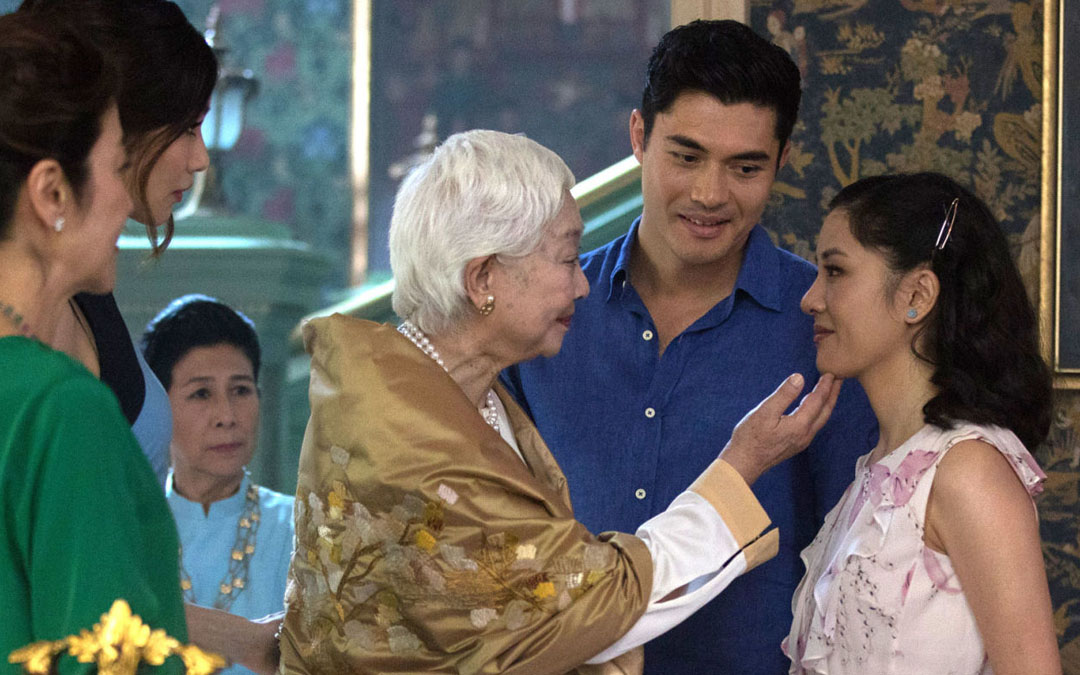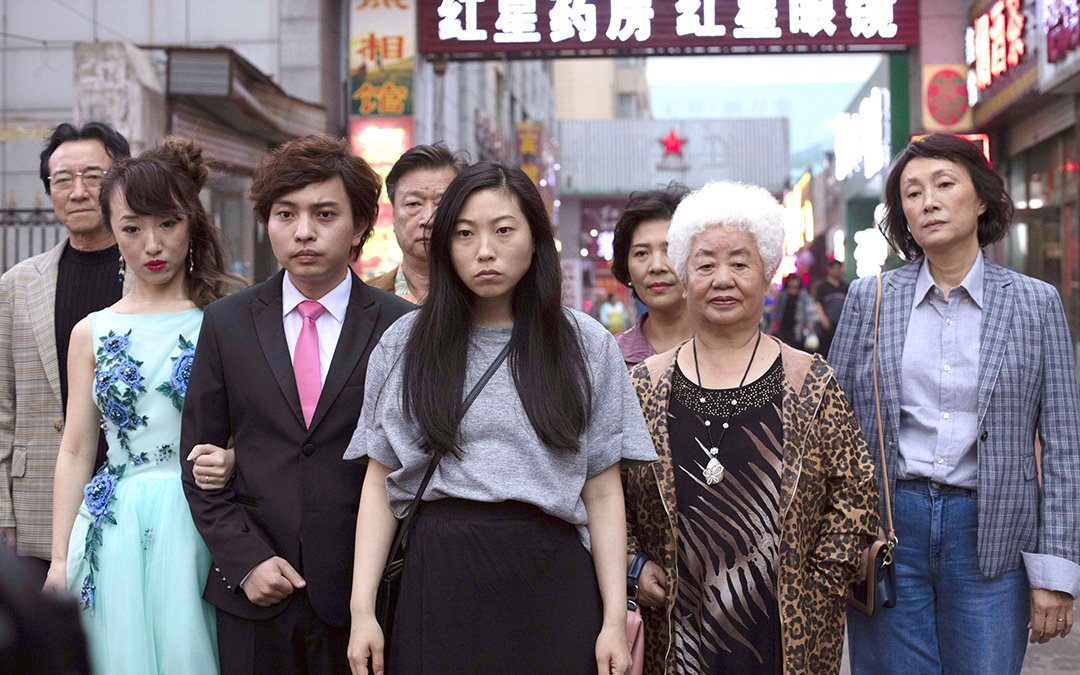All The Write Moves: 'The Farewell'
July 29, 2019
Among this summer’s indie breakouts is The Farewell, an American production featuring dialogue almost exclusively in subtitled Chinese. Writer-director Lulu Wang based the story upon an outrageous real-life experience. When Wang’s grandmother was given a terminal cancer diagnosis, the family honored a Chinese tradition by deciding not to tell the grandmother about her medical condition. In The Farewell, a character based upon Wang, young Chinese-American Billi (played by Awkwafina), accompanies her family to China so they can spend time with Billi’s grandmother, Nai Nai (Zhao Shuzhen). What ensues is a dramedy brimming with cultural and thematic significance.
Who am I here?
The central conflict that Billi faces throughout The Farewell runs deeper than mainlining the lie about Nai Nai’s health. In America, where Billi has lived since childhood, she is more Western than Eastern; an ambitious and independent woman whose life revolves around her own desires and needs. In China, the circumstances of the lie force Billi to behave as an Easterner. As her uncle says in an important scene, this means that Billi must subsume her individual identity into the collective identity of the family — hence the idea that the family tells the lie in order to assume the emotional burden of Nai Nai’s mortality.
This is a rich thematic vein with implications far beyond the plot of The Farewell. Each of us has multiple identities. We are the children of our parents. We continue family lines. We are citizens of our home towns and of our home countries. And yet those are merely the identities we possess inherently from birth. Then there are the identities we develop during our lives. Artistic identities. Political identities. Religious identities. Sexual identities.
One of the profound issues explored by The Farewell is how identity fluctuates. We are different people in different company. We code-switch language when we transition from, say, a conversation with work friends to a conversation with family members. And that’s only the beginning. We also code-switch aspects of our personalities as circumstances demand. In The Farewell, Billi must suppress her natural inclinations toward being emotionally demonstrative and unrelentingly honest. This pains her because in addition to lying to Nai Nai, she is lying to herself. Worse, she remains ambivalent throughout The Farewell as to whether the lie is as beneficial as her relatives believe it to be.
In this sense, The Farewell is about a sort of faith — a belief in the wisdom of family and tradition, as manifested in respect for elders. Billi plays along not out of weakness, as if she’s too timid to challenge her family, but rather out of strength. She finds the resolve to accept that the tradition of the lie is part of something bigger than her. Perhaps her ultimate lesson, therefore, is not about sacrifice but instead about humility.
Takeaway: Seek dramatic situations that put different aspects of characters’ identities into conflict with each other.
The cost of a lie
We tend to think of dramatic conflict as two characters with opposing desires — for instance, a supervillain who wants to take over the world and a superhero who wants to stop the supervillain. Yet in character-based movies, conflict can take surprising forms. Throughout The Farewell, arguably the most intense conflict is known only to one of the parties involved. Struggling to maintain the lie reads on Billi’s face as stress, so Nai Nai regularly asks if Billi is okay, offering food and guidance and support to keep her beloved granddaughter strong. In essence, they both want the same thing — to make each other feel happy and loved — but because their circumstances are different, an unusual sort of conflict emerges.
Nai Nai lives in what Billi perceives as the normal world of total truth. The older woman is critical when she finds fault, joyous when she encounters beauty, and warm when she expresses love. Conversely, because of the lie, Billi lives in a world of constant dishonesty, choosing her words carefully and wearing fake smiles to hide the fact that her heart is breaking. This resembles what we generally call internal character struggle, even though it functions as external character struggle. Such are the delicate waters that intimate movies can navigate.
The lesson? When you construct relationships between characters, you need not restrict yourself to obvious interpersonal dynamics. Note how Wang’s script uses its central premise (the lie) as a foundation for everything that follows. The lie draws out tension between Americanized Billi and her parents, who retain many Chinese attitudes. The lie makes it difficult for Billi to fully enjoy special moments with Nai Nai, because guilt colors everything, and so on.
There’s no one way to begin building a story. Some writers think of characters first, while others begin with a premise. But one thing The Farewell teaches us is that unity among narrative elements results in cohesive cinematic experiences. Perhaps because she drew heavily from real life, Wang found exactly the right crisis with which to explore exactly the right set of characters, resulting in specific and unusual dynamics.
Takeaway: Matching the right premise with the right characters naturally creates interesting dramatic conflict.
The outsider
Inevitably, some pundits will draw comparisons between The Farewell and last year’s romantic comedy hit Crazy Rich Asians, even though the stories are profoundly different and take place in different Asian countries. However, one similarity that is helpful to screenwriters to consider is the use of an outsider character. In Crazy Rich Asians, the primary outsider character is the protagonist, an Asian-American who has spent very little time in Asia. In The Farewell, because Billi is comparatively much more familiar with her homeland than the protagonist of Crazy Rich Asians, the most prominent outsider character is Aiko (played by Aoi Mizuhara). She is engaged to Billi’s cousin, Hao Hao (Chen Han), and the occasion of their wedding is the excuse that the family employs to justify gathering in China following Nai Nai’s terminal diagnosis.
Aiko is Japanese, and she doesn’t speak Chinese. Worse, she is tentative in everything that she does, because in addition to not being familiar with Chinese customs, she honors the Japanese customs of deference and politeness. Some of The Farewell’s best tension-relieving laughs emanate from situations involving Aiko, who seems lost and more than a little bit terrified in nearly every situation (worth special note is a cringe-inducing bit during which Aiko and Hao Hao pathetically try to sing a song onstage during their reception).
What’s interesting to contemplate here is not the presence of the Aiko character, but rather the limited scope of Aiko’s presence. In reflecting the truth of her own life experience, Wang ensured that the leading character of The Farewell is not a pure outsider, as the protagonist of Crazy Rich Asians was. Like Wang, Billi was born in China, then lived for years in America. Portraying her as confused and timid about foreign ways like the protagonist of Crazy Rich Asians would have been false. Yet by including the Aiko character, Wang found a way to integrate the outsider color into her palette.
Not every American-made movie about a culture outside the United States must be told from a purely “American” perspective. America’s population spans from global citizens to people who never visit anyplace beyond the contiguous 48 states. By not succumbing to the obvious impulse — using an outsider character as a means of helping non-Chinese viewers grasp foreign concepts quickly — Wang was able to dive much deeper into her themes than she would have been able to do otherwise.
Takeaway: The deepest stories about foreign cultures are told from inside those cultures, not from outside.
Written by: Peter Hanson
Peter Hanson is a Los Angeles-based writer, filmmaker and teacher. He directed the screenwriting documentary Tales from the Script, and he teaches at Pepperdine University and UCLA Extension. He provides script consulting at www.GrandRiverFilms.com.- Topics:
- Discussing TV & Film




